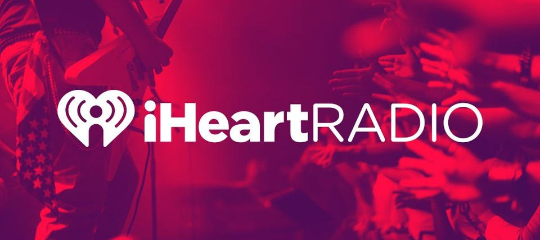
- Blog
- Jan 29, 2021
- By Cam Sivesind
One organization’s goal is to end poverty for good, starting with children. Another’s belief: no kid in America should go hungry. Yet another champions the rights of the world’s 2.3 billion children. Last but not least, another organization helps economically challenged families in Florida provide educational opportunities to their children. We are happy to be their playing a supporting role with our non-profit attribution solution.
That’s a lot of good being pushed out into the world. Helping children is the noblest of causes, and we are honored to work with Children International, No Kid Hungry, Save the Children, and Step Up For Students. The work they do takes resources, people power, education, awareness, and creation of trust.
We’re fortunate to play a part by improving the performance of the marketing of these causes and, through our multi-touch marketing attribution service, help them more effectively garner more donations to fund activities and services, more volunteers to get the work done, and more bang for their advertising buck to educate the public, philanthropists and corporations. This in turn creates more awareness and increases transparency, trust and belief in the missions of these organizations.
Noble missions with one common goal: Helping kids
We’d like to tell you a little bit about each organization, their mission, who they are, and what they do.
1. Children international
- The Mission: “We connect people around the world in the fight to end poverty. Working together, we invest in the lives of children and youth, build the healthy environments they need to thrive, and empower them to create lasting change in their own lives and communities.”
- Children International is all about analytics, providing statistics, research and rigorous follow-up for every initiative. Just as we help them focus on measuring marketing performance, Children International measures what programs are working, and which ones are not. This allow it to track progress and make modifications to build more effective and impactful programs for the children and youth it serves.
- Impact: In 2018, 97% of sponsored children and youth received the primary health care they needed.
- Leadership: Susan Eshleman, CEO & President
2. No Kid Hungry
- Hunger Facts: According to the USDA, more than 11 million children in the United States live in “food insecure” homes. That phrase may sound mild, but it means that those households don’t have enough food for every family member to lead a healthy life. And that number dates from before the coronavirus pandemic. Today, projections show that 18 million children could face hunger this year.
- The No Kid Hungry name is its promise. No Kid Hungry is a national campaign run by Share Our Strength, a nonprofit working to solve problems of hunger and poverty in the United States and around the world. After 25 years of successfully investing in local nonprofits and helping find the best approaches to eradicating poverty and hunger, Share Our Strength launched No Kid Hungry in 2010. As a child hunger organization, ending childhood hunger is its primary focus, though Share Our Strength continues to invest in and develop other campaigns.
- Impact: COVID-19 has exacerbated the vulnerability of children going hungry. So far, No Kid Hungry has sent $65 million in emergency relief to 1,783 schools and community groups across all 50 states, Puerto Rico, the District of Columbia and Guam. These funds, with hands-on guidance, are helping serve millions of meals a day during this crisis.
- Leadership: Tom Nelson, President & CEO
3. save the children
- A Triple Jeopardy: The scale of crisis in the world has increased exponentially in recent years. There are more children living in conflict and war zones now than at any time in the past 20 years, as well as more child refugees. Natural disasters are not only more frequent, but more severe. As always, children in crisis are among the most vulnerable. In particular, the more than 12 million refugee boys and girls now face a triple jeopardy. Not only have they lost their homes and lost their education, they now face the additional impact of COVID-19 on their futures.
- Much has changed since Save the Children was founded in 1919. The UN Convention on the Rights of the Child, based on its founder’s declaration, is now the most universally accepted human rights treaty in history. And, through its work in the United States and around the world, Save the Children has changed the lives of over 1 billion children.
- Impact: Save the Children has helped cut the number of children dying before age 5 by over half since 1990, saving 122 million lives. It has helped reduce by one-third the number of children stunted from malnutrition since 2000. Today, there are 49 million fewer stunted children. It has transformed the way health care is delivered in the world’s hardest to reach places by pioneering programs that treat children close to home, so they receive lifesaving care before it’s too late. In America, it is working to make sure kids can get the nutrition they need during this crisis, with 6 million meals prepared and delivered.
- Leadership: Janti Soeripto, President & CEO
4. Step up for students
- The Mission: Step Up For Students empowers families to pursue and engage in the most appropriate learning options for their children, with an emphasis on families who lack the information and financial resources to access these options. By pursuing this mission, we help public education fulfill the promise of equal opportunity. Step Up For Students is a state-approved nonprofit scholarship funding organization that helps administer funds from five scholarships programs for Florida schoolchildren.
- Step Up For Students believes public education is rooted in the promise of equal educational opportunity, and nowhere is that covenant more relevant than in the lives of struggling or disadvantaged children. These scholarships strengthen public education by offering options to struggling schoolchildren. Step Up For Students is a partner of public schools in giving all students the tools toward success. It does this by empowering parents through the scholarship programs so that they might have an equal opportunity to discover educational options that work best for their children.
- Impact: Step Up For Students puts scholarships in parents’ hands to make the best decision for their children and has provided nearly 900,000 scholarships over the last 19 years. This year, across five programs, it is helping 144,000 students, most of whom are minorities, with scholarships totaling nearly $1 billion.
- Leadership: Doug Tuthill, President
How Does Non-Profit attribution Benefit the organization?
Just as any for-profit business wants to optimize their ad spend to draw in more customers and create more conversions, non-profits want to optimize the donation dollars they receive to better reach more volunteers and individual and corporate donors. This requires collecting and examining attribution data and providing insights so future marketing campaigns, either through paid ads or donated digital ads or airtime, are hitting the right people in the right places at the right time.
Let’s break down the benefits of attribution for non-profits:
- Garner More Donations – Understand the channels generating donations, sponsorships, memberships.
- Identify Top Referrals – Find and nurture key lead-gen sources (social media, community and business partners, brand evangelists).
- Create Loyalty – Learn what channels, techniques, and messaging are encouraging more recurring membership signups.
- Cohort Analysis – Maximize donations by identifying and targeting the right cohort of sponsors
- Online and Offline Crossover – Find ways to connect with offline donors digitally (email, website, social); and reach online supporters by traditional methods (mail, phone)
- TV and Radio Prowess – Learn what types of TV and radio campaigns drive donations; and hire a vendor with experience in non-profit attribution.
- Content Is King – Know what content and creative is most effective. Drive organic traffic using the best SEO.
While what we do pales in comparison to the daily work done by the charitable organizations listed above, and others doing similar work, we take pride in providing impartial non-profit attribution of their marketing campaigns. The upfront goal is to focus outreach on the right channels to reach the correct audiences and optimize return on ad spend. The larger goal is to help more children avoid hunger and poverty and create more educational and financial opportunities for those kids and their families.





